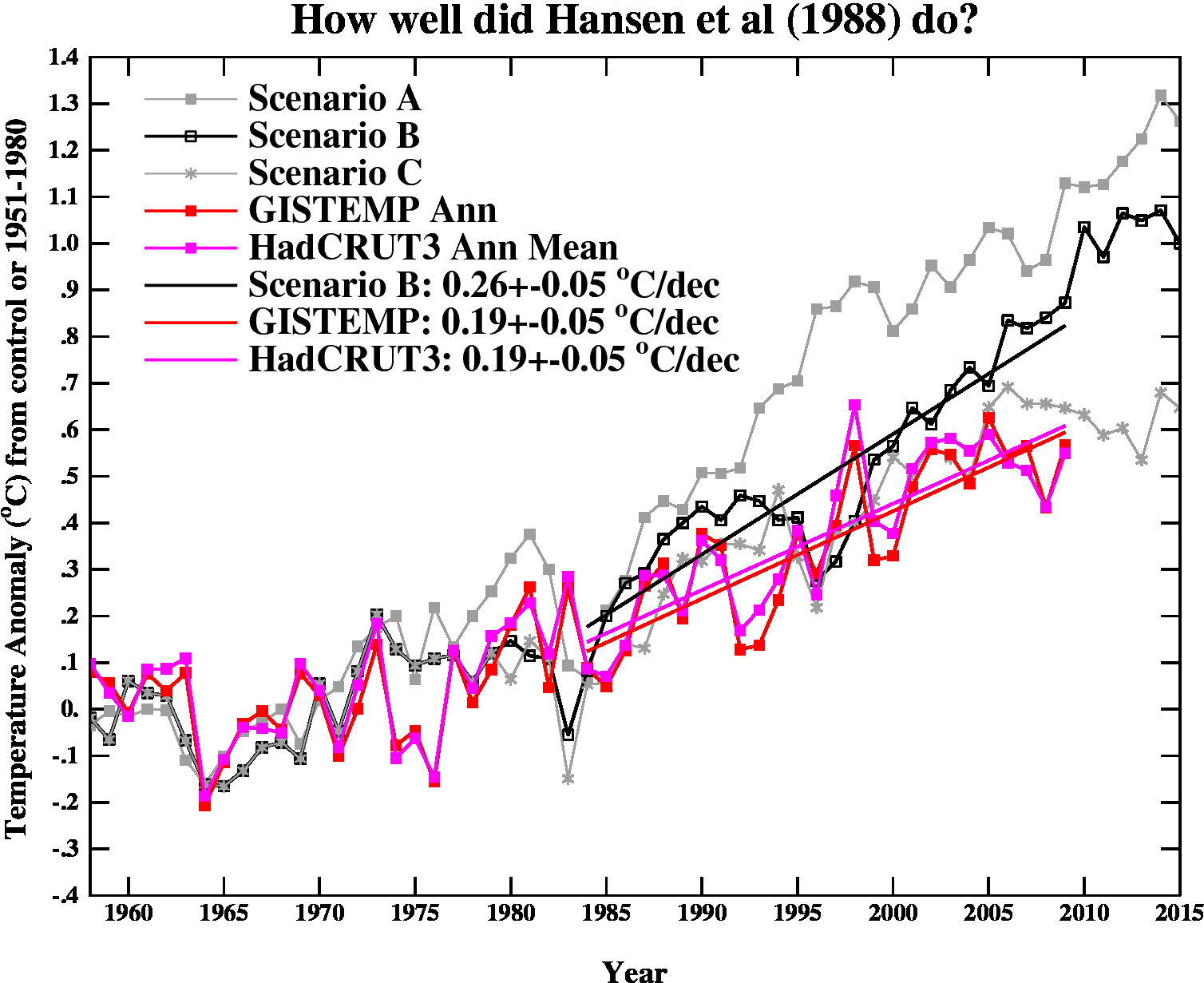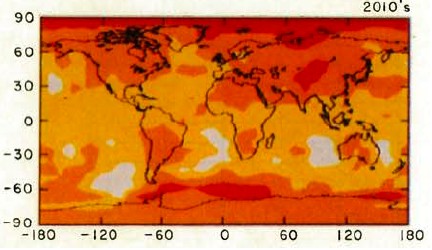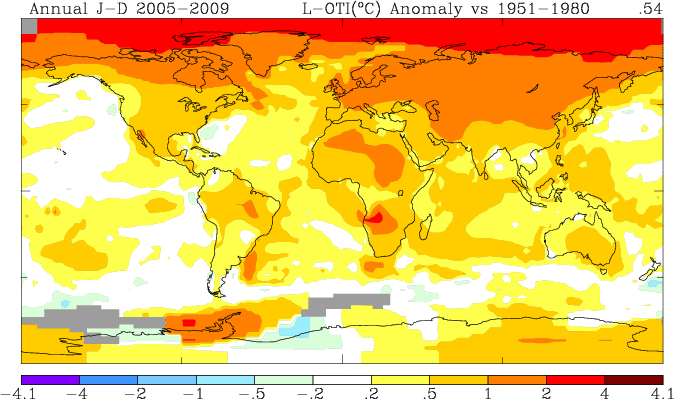 Arguments
Arguments
 Software
Software
 Resources
Comments
Resources
Comments
 The Consensus Project
The Consensus Project
 Translations
Translations
 About
Support
About
Support


Latest Posts
- Zeke's 2026 and 2027 global temperature forecasts
- 2025 SkS Weekly Climate Change & Global Warming News Roundup #51
- Skeptical Science New Research for Week #51 2025
- What are the causes of recent record-high global temperatures?
- Fact brief - Are toxic heavy metals from solar panels posing a threat to human health?
- Emergence vs Detection & Attribution
- 2025 SkS Weekly Climate Change & Global Warming News Roundup #50
- Skeptical Science New Research for Week #50 2025
- The rest of the world is lapping the U.S. in the EV race
- Fact brief - Are electromagnetic fields from solar farms harmful to human health?
- Comparing climate models with observations
- 2025 SkS Weekly Climate Change & Global Warming News Roundup #49
- Skeptical Science New Research for Week #49 2025
- Climate Adam & Dr Gilbz - Paris Climate Agreement At 10: Did It Do Anything?
- Fact brief - Does the recent slowdown in Arctic sea-ice extent loss disprove human-caused warming?
- Why the chemtrail conspiracy theory lingers and grows – and why Tucker Carlson is talking about it
- 2025 SkS Weekly Climate Change & Global Warming News Roundup #48
- Skeptical Science New Research for Week #48 2025
- Consensus machines
- Just have a Think - How an African energy revolution could save ALL of us.
- A girl’s grades drop every summer. There’s an alarming explanation.
- 2025 SkS Weekly Climate Change & Global Warming News Roundup #47
- Fact brief - Are changes in solar activity causing climate change?
- Skeptical Science New Research for Week #47 2025
- Exploring newly released estimates of current policy warming
- Climate Adam - Why the Climate Crisis is a Health Crisis
- Super pollutants are trendy, but we should be careful how we use them
- 2025 SkS Weekly Climate Change & Global Warming News Roundup #46
- Skeptical Science New Research for Week #46 2025
- On the Gates climate memo
Archived Rebuttal
This is the archived Intermediate rebuttal to the climate myth "Hansen's 1988 prediction was wrong". Click here to view the latest rebuttal.
What the science says...
|
Hansen's 1988 projections were too high mainly because the climate sensitivity in his climate model was high. But his results are evidence that the actual climate sensitivity is about 3°C for a doubling of atmospheric CO2. |
In 1988, James Hansen projected future temperature trends using 3 different emissions scenarios identified as A, B, and C. Scenario A assumed continued exponential greenhouse gas growth. Scenario B assumed a reduced linear rate of growth, and Scenario C assumed a rapid decline in greenhouse gas emissions around the year 2000 (Hansen 1988). As shown in Figure 1, the actual increase in global surface temperatures has been less than any of Hansen's projected scenarios.

Figure 1: Global surface temperature computed for scenarios A, B, and C, compared with two analyses of observational data (Schmidt 2009)
As climate scientist John Christy noted, "this demonstrates that the old NASA [global climate model] was considerably more sensitive to GHGs than is the real atmosphere." Unfortunately, Dr. Christy decided not to investigate why the NASA climate model was too sensitive, or what that tells us. In fact there are two contributing factors.
Radiative Forcing
A radiative forcing is basically an energy imbalance which causes changes at the Earth's surface and atmosphere, resulting in a global temperature change until a new equilibrium is reached. Hansen translated the projected changes in greenhouse gases and other factors in his three scenarios into radiative forcings, and in turn into surface air temperature changes. Scenario B projected the actual changes we've seen in these forcings most closely. As discussed by Gavin Schmidt and shown in the Advanced version of this rebuttal, the radiative forcing in Scenario B was too high by about 5-10%. Thus in order to assess the accuracy of Hansen's projections, we need to adjust the radiative forcing and surface temperature change accordingly.
Climate Sensitivity
Climate sensitivity describes how sensitive the global climate is to a change in the amount of energy reaching the Earth's surface and lower atmosphere (radiative forcings). Hansen's climate model had a global mean surface air equilibrium sensitivity of 4.2°C warming for a doubling of atmospheric CO2 [2xCO2]. This is on the high end of the likely range of climate sensitivity values, listed as 2-4.5°C for 2xCO2 by the IPCC, with the most likely value currently widely accepted as 3°C.
Since the Scenario B forcing was about 5-10% too high, its projected global surface air temperature trend was 0.26°C per decade, and the actual surface air temperature trend has been about 0.2°C per decade (NASA GISS), Hansen's climate model's sensitivity was about 25% too high. Thus the real-world climate sensitivity would be approximately 3.4°C to in order for Hansen's climate model to correctly project the ensuing global surface air warming trend. This climate sensitivity value is well within the IPCC range.
In other words, the reason Hansen's global temperature projections were too high was primarily because his climate model had a high climate sensitivity parameter. Had the sensitivity been approximately 3.4°C for a 2xCO2, and had Hansen decreased the radiative forcing in Scenario B slightly to better reflect reality, he would have correctly projected the ensuing global surface air temperature increase.
Spatial Distribution of Warming
Hansen's study also produced a map of the projected spatial distribution of the surface air temperature change in Scenario B for the 1980s, 1990s, and 2010s. Although the decade of the 2010s has just begun, we can compare recent global temperature maps to Hansen's maps to evaluate their accuracy.
Although the actual amount of warming (Figure 3) has been less than projected in Scenario B (Figure 2), this is due to the fact that as discussed above, we're not yet in the decade of the 2010s (which will almost certainly be warmer than the 2000s), and Hansen's climate model projected a higher rate of warming due to a high climate sensitivity. However, as you can see, Hansen's model correctly projected amplified warming in the Arctic, as well as hot spots in northern and southern Africa, west Antarctica, more pronounced warming over the land masses of the northern hemisphere, etc. The spatial distribution of the warming is very close to his projections.


Figure 2: Scenario B decadal mean surface air temperature change map (Hansen 1988)

Figure 3: Global surface temperature anomaly in 2005-2009 as compared to 1951-1980 (NASA GISS)
Hansen's Accuracy
The appropriate conclusion to draw from these results is not simply that the projections were wrong. The correct conclusion is that Hansen's study is another piece of evidence that climate sensitivity is in the IPCC stated range of 2-4.5°C for 2xCO2.
Updated on 2016-11-25 by dana1981.
THE ESCALATOR

(free to republish)
























































